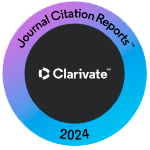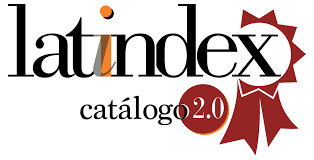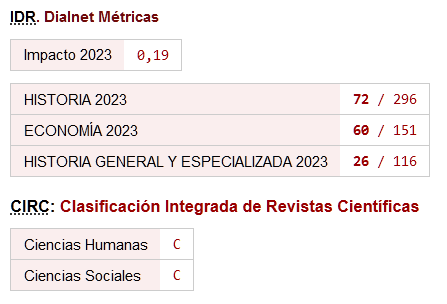Accounting in the Osuna’s Ducal Estate during the Royal seizure of its Patrimony (1591-1633)
DOI:
https://doi.org/10.26784/issn.1886-1881.v4i6.182Keywords:
Accounting History, Aristocracy, 16th-17th centuries, Osuna’s ducal estateAbstract
The Spanish aristocratic estates were one of the more important private economic organizations in the country, al least until 19th century. In spite of this, there is yet a lack of research works on accounting history of the Spanish Aristocratic estates. This paper deals with accounting used in the Osuna’s ducal estate, one of the bigger Spanish aristocratic estates. The Crown seized the patrimony of the ducal estate in 1590 due to high level of indebtedness and the problems to pay accurately to their creditors. This kind of financial problems were not exclusive of the Osuna’s ducal estate but usual in other Spanish aristocratic organizations in that period. However, the availability of primary sources just allows starting the study with the accounts reported in 1594 but related to 1591. This period covers until 1633. The king decided to give back to the dukes the management of their patrimony in that year in spite of the problem of indebtedness had not been solved but, on the contrary, had increased. The paper bases on the primary sources kept in the Municipal Archive of Osuna and in the Nobility Section of the National Historic Archive. The study of these sources allows the description of several accounting documentation coming from the period 1594-1633, overall, the accounts reported by the collectors of the ducal patrimony in different villages of Andalusia. After studying the documents we can assert that the main role played by accounting in the Osuna’s ducal estate during those years were the rendering of accounts of the organisation’s agents. The aim of the accounts was to calculate the balance, creditor or debtor, of these agents face to the ducal estate. The method used to reach this objective was the charge and discharge as usual in other great organizations of this period. On the other hand, we can conclude that accounting did not play an important role in the decision-making of the management of the seized patrimony nor there relevant changes in the accounting informative flows of the organisation during the period of the seizure.
Downloads
References
Fuentes primarias
Archivo Municipal de Osuna, fondos procedentes del Archivo de Rodríguez Marín, legajos:
(53): Cuentas de los mayordomos, 1591-1593.
(56): Libro de Hacienda del estado de Andalucía, 1622 22 (60): Libro de Hacienda del estado de Andalucía, 1620.
Sección Nobleza del Archivo Histórico Nacional, fondo Osuna, legajos: 11 (9): Contrato de arrendamiento del patrimonio, 1599.
(16): Real Cédula de devolución de la gestión directa, 1633.
(5): Levantamiento del embargo, 1684.
(24): Reglas para la administración y cobro de las rentas de los estados, 1605. 1494 (1): Graduación de deudas de 1594.
(39-52): Inventario de cuentas de los administradores de Andalucía, 1585-1633. 3433 (13): Provisión Real sobre acuerdo duque-acreedores, 1606.
Artola, M. (dir.) (1995): Enciclopedia de la historia de España, tomo V, Diccionario Temático, Madrid, Alianza Editorial.
Atienza Hernández, I. (1987): Aristocracia, Poder y Riqueza en la España Moderna. La Casa de Osuna, siglos XV-XIX, Madrid: Siglo Veintiuno Editores.
Bernal, A. M. (1983): "Andalucía en el Siglo XVI, La Economía Rural·, en Domínguez Ortiz, A. (dir.), Historia de Andalucía, tomo. 4, La Andalucía del Renacimiento, Ed. Cupsa, Madrid, Ed. Planeta, Barcelona.
Boyns, T. y Carmona Moreno, S. (2002): "Accounting History Research in Spain, 1996-2001: an Introduction", Accounting, Business & Financial History, Vol. 12, No.2, pp. 149-155.
https://doi.org/10.1080/09585200210134884
Carmona Pidal, J. (2001): Aristocracia terrateniente y cambio agrario en la España del siglo XIX. La Casa de Alcañices (1710-1910). Junta de Castilla y León, Consejería de Educación y Cultura, Ávila.
Clavero Salvador, B. (1989): Mayorazgo, 2ª ed., Siglo XXI de España editores, Madrid.
Domínguez Ortiz, A. (1973): Las Clases Privilegiadas en el Antiguo Régimen, Editorial Istmo, Madrid.
Domínguez Ortiz, A. (1983): "La Sociedad Bajo Andaluza", en Domínguez Ortiz, A. (dir.), Historia de Andalucía, tomo 4, La Andalucía del Renacimiento, Ed. Cupsa, Madrid, Ed. Planeta, Barcelona.
García Sanz, A. (1991): "Renta Territorial y Patrimonio de una Casa Nobiliaria en la Castilla del Siglo XIX: los Marqueses de Lozo ya, 1808-1896" en Saavedra, P. y Villares, R. (eds. ): Señores y Campesinos en la Península Ibérica, Barcelona, Editorial Crítica, pp. 173-200.
Garrabou , R., Saguer, E. y Sala, P. (1993): "Formas de Gestión Patrimonial y Evolución de la Renta a partir del Análisis de Contabilidades Agrarias: los Patrimonios del Marqués de Sentmenat en el Vallés y en Urgell (1820-1917)", Noticiario de Historia Agraria, nº 5, pp. 97-125.
González Ferrando, J. M. (1988): "De las Tres Formas de Llevar 'Cuenta y Razón' según el licenciado Diego del Castillo, Natural de Molina", Revista Española de Financiación y Contabilidad, Vol. XVII, nº 55, p. 183-222.
Guilarte, A. Mª. (1987): El régimen señorial en el siglo XVI, Secretariado de publicaciones de la Universidad de Valladolid.
Hamilton, E. J. (2000): El Tesoro Americano y la Revolución de Precios en España, 1501-1650, Ed. Crítica, Barcelona.
Hernández Esteve, E. (1985): "Pedro Luís de Torregrosa, primer contador del Libro de Caxa de Felipe II. Introducción de la Contabilidad por Partida Doble en la Real Hacienda de Castilla (1592)", Revista de Historia Económica, año III, No. 2, p. 221-245. https://doi.org/10.1017/S0212610900013732
Hernández Esteve, E. (1992): "Orígenes y desarrollo de la contabilidad en España (siglos XIII-XIX) en Gonzalo, J. A., coord. (1992): Contabilidad en España, 1992, Madrid, ICAC.
Hernández Esteve, E. (2005): "Un lustro de investigación histórico-contable en España (2001-2005)", Revista de Contabilidad, vol. 8, nº 15, pp. 45-94.
López Manjón, J.D. (2004): Contabilidad Señorial en España. Estudio de la Casa ducal de Osuna desde un Enfoque Interdisciplinario, Tesis Doctoral no publicada, Universidad Pablo de Olavide, de Sevilla.
López Manjón, J.D. y Gutiérrez, F. (2005): "El uso de los presupuestos en la Casa ducal de Osuna, 1860- 1869", De Computis, Revista Española de Historia de la Contabilidad, nº3, pp. 72-98.
https://doi.org/10.26784/issn.1886-1881.v2i3.215
Pérez Picazo, Mª. T. (1991): "Riqueza Territorial y Cambio Agrícola en la Murcia del Siglo XIX. Aproximación al Estudio de una Contabilidad Privada (1800-1902)", Agricultura y Sociedad, nº 61, pp. 39-95.
Regla, J. (1974): "La época de los tres primeros Austrias", en Vicens Vives, J. (dir.): Historia de España y América Social y Económica. Vol. III., 2ª reed., Barcelona, Ed. Vicens- Vives.
Viña Brito, A. (1990): "Don Pedro Girón y los orígenes del señorío de Osuna", Historia, Instituciones, Documentos, No. 17, p. 267-285.
https://doi.org/10.12795/hid.1990.i17.012
Yun Casalilla, B. (2002): La Gestión del Poder. Corona y Economías Aristocráticas en Castilla (Siglos XVI- XVIII), Ed. Akal, Tres Cantos (Madrid).
Downloads
Published
How to Cite
Issue
Section
License
Copyright (c) 2023 Jesús Damián López Manjón

This work is licensed under a Creative Commons Attribution-NonCommercial-ShareAlike 4.0 International License.










